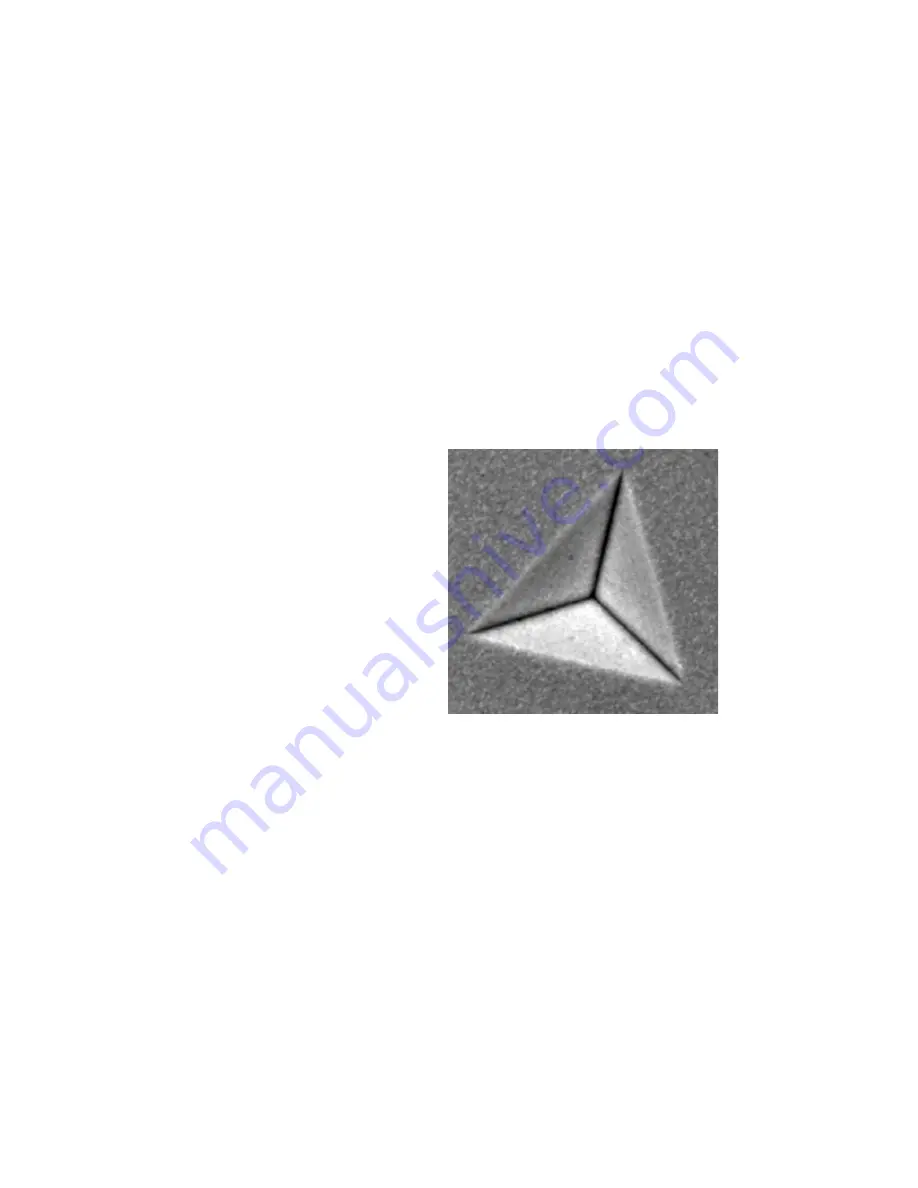
Theory 7
Agilent Nano Indenter G200 User’s Guide
7-28
Best Experimental Practice
Choosing an Indenter Geometry
Although the Nano Indenter G200 can accommodate any indenter type
(spherical, cube-corner, Vickers, and so on), the Berkovich geometry is
generally preferred for measurement of hardness and elastic modulus.
This is a three-sided pyramid that has an aspect ratio similar to that of
the four-sided Vickers pyramid. The Berkovich pyramid is a good
choice for standard testing because it produces plasticity at very low
loads, it has good manufactured quality, and it minimizes the influence
of friction.
shows a residual impression left by a Berkovich
indenter.
Figure 7-22
Residual impression from Berkovich indenter
Environmental Control
To take full advantage of the fine displacement resolution available,
several precautions must be taken in choosing and preparing the testing
environment. Uncertainties and errors in measured displacements arise
from two separate environmental sources: vibration and variations in
temperature that cause thermal expansion and contraction of the sample
and testing system. The system sits on a vibration isolation table, but it
is also desirable that the equipment be placed on a quiet, solid
foundation (ground floor). The isolation cabinet in which the instrument
is enclosed provides some thermal stability, but the room temperature
should be controlled to within ±1 °C. On some materials, one can
account for small thermal displacements using the correction for
thermal drift, which is described later. However, for time-dependent
materials (polymers and metals at a significant fraction of their melting
















































